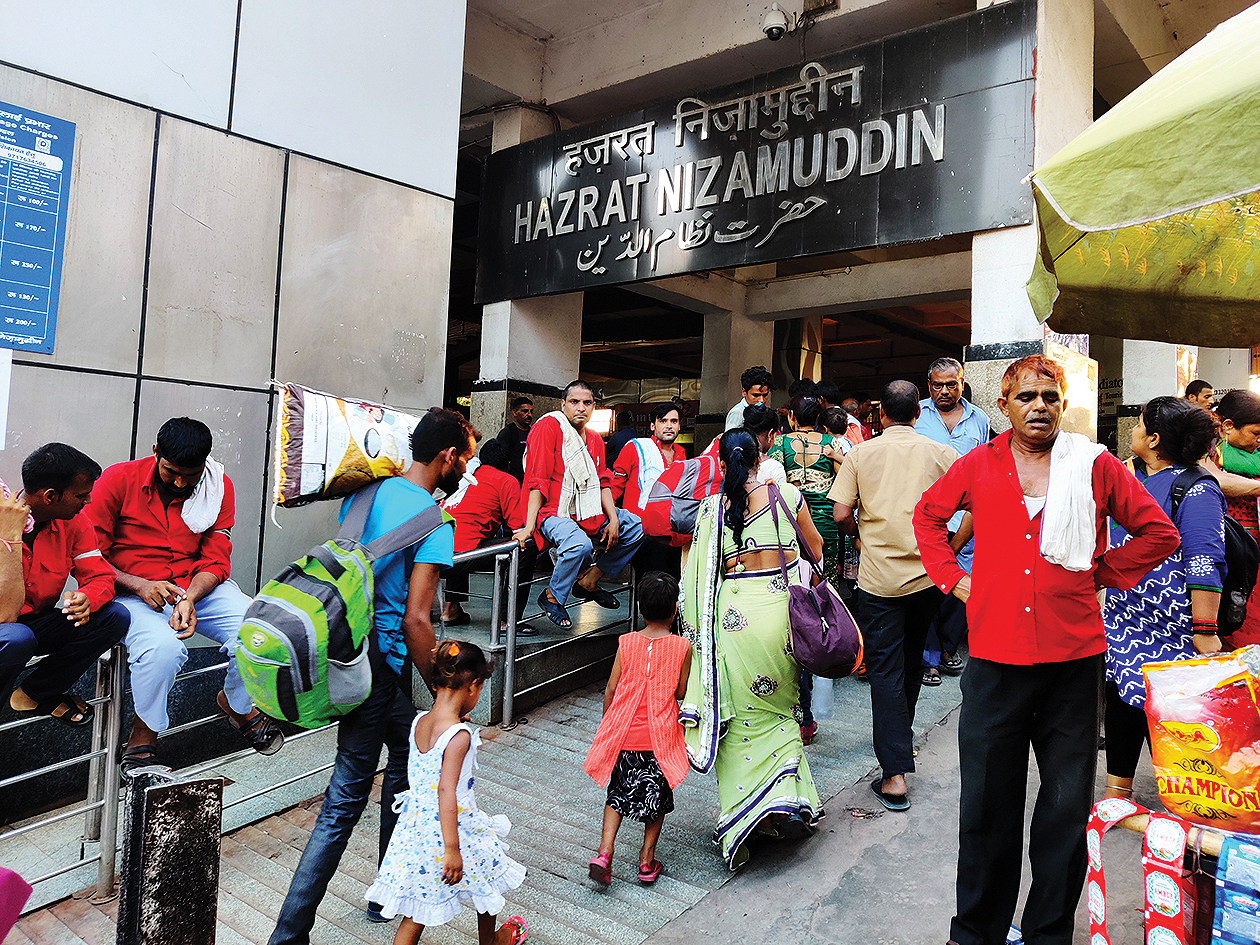Construction workers who were asked to leave Kashmir have joined the streams of migrants from Uttar Pradesh and Bihar who come to Delhi for seasonal work – sometimes to be disappointed, sometimes to be exploited
Streams of migrant labourers arrive at Anand Vihar train station in the early hours of the morning, all with one goal – to find a job as soon as possible. As Delhi is a major destination for trains from Bihar and Uttar Pradesh, it’s no surprise that this steady influx takes place every day. Census 2011 points to these two states being the biggest source states of internal migrants while the major destination states are Delhi, Maharashtra, Tamil Nadu, Gujarat, Andhra Pradesh and Kerala.
The capital city sees much seasonal migration of villagers who come for a few months of informal work. One of the first-time entrants is Gulam Zahid. A resident of Kutiya in Bihar, he isn’t alone in this “big, bad city”. He has come to Delhi with two others from his village – the trio has previously worked together.
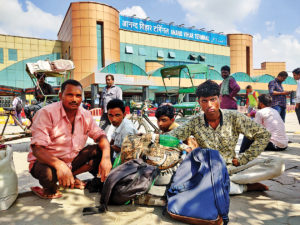
Zahid worked in Kashmir doing masonry, before the government asked migrants and tourists to leave the state as a security measure, before announcing the abrogation of Article 370 and 35A on August 5. Zahid says he would make about Rs 700 a day in Kashmir, which meant he could save around Rs 10,000 a month to send home. “Par ab toh kaam sab bund ho gaya, wahan kyunki mahaul jo kharab hai, mushkil se aaye hum apni jaan bachake”, (But now all work is stalled because the situation is not good. We returned somehow), he says.
It’s been over a month since leaving Kashmir, though, and no steady income to run their household. So they wait, sitting under a tree like several others, to get some shade from the blazing morning sun. The thekadar (contractor) has gone out to find them work. He has no idea what that may be nor how much they will be paid — under the circumstances, anything will be good enough, he says.
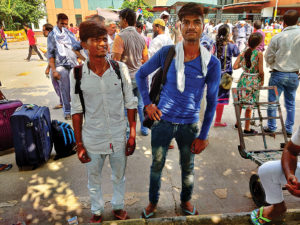
This happens with most of the migrant labour force – they come in groups, sold on the idea that the city can offer better paid jobs and better quality of life. For Zahid and his friends, it was more of desperation. “Yeh hamari majboori hai” (We are forced to do this) he tells us, with no job back at home, no agricultural land of his own to depend on, coming to a city is the only choice he is left with.
It’s now been 15 years of migrating for work. In Bihar, he says, the work available is not steady — after a few months of work, there is a complete lull which forces them to look elsewhere.
Such desperation gives the employer good opportunity to take advantage of the migrants. Many auto drivers standing at the railway station say hundreds of labourers come each day. And each day contractors or agents come and pick them up directly from the station or from the bus stop close by.
Imran, who carries himself like a leader of the group of autorickshaw drivers and is treated like one too, says that with little to no knowledge of the ground reality, the migrants are often misled. “Inko jab Rs 500 milna chahiye, usi kaam ke liye unhe Rs 250 milega. Par in logo ko kuch nahi samajh aata” (Where the people should be making Rs 500 they get only Rs 250. But they don’t understand) he says.
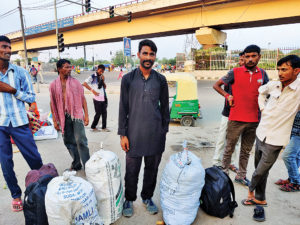
It’s no wonder then that recently the Interstate Migrant Policy Index 2019 (IMPEX 2019) showed that out of the seven states which figure in the most popular destination states for migrants, Delhi came last with an overall score of 33 (out of 100), much behind the top scorer Kerala at 62 and two points below Gujarat at 35. The ranking has been done considering key policy areas like labour market, education right, child rights, healthcare and domicile and identity, among other factors.
Delhi thus has something to learn from its South side sibling, which has made migrant friendly policies. It is important to note here that the report — compiled by India Migration Now, a Mumbai-based non-profit — points to the fact that nearly three million Keralites work outside the state which means it depends on migrant workers from other states, which they say is “fundamental to the economic and social fabric of the state.”
But internal migration is positive for other states too: “Both within a state and across states in India, (migration) improves households’ socioeconomic status, and benefits both the region that people migrate to and where they migrate from” the report has cited.
However, while we may think there’s a lot of interstate migration taking place, India has fewer such instances compared to those countries at a similar stage of economic development.
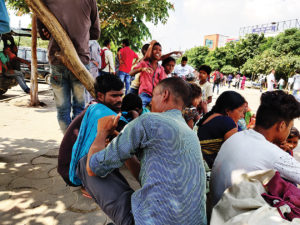
The census puts the total number of internal migrants in the country at 139 million while a more specific number from recent years comes from the Economic Survey of India 2017. It estimates that the magnitude of inter-state migration in India was close to 9 million annually between 2011 and 2016.
Census of 2011 shows that migrants in Delhi totalled 9.27 lakh of which 1.24 lakh had come for work/employment. The data also revealed how mostly men were the ones choosing to come here with male numbers being 1.10 lakh and female at a little over 14,000.
While it is easy to spot the migrant men in the crowd at the railway station, women are scarcer. When we finally found a woman who had come to work in the city, it turned out she was not a first timer. A little evasive, Sarita said her parents and other members of her family she didn’t want to identify, are all in city to find jobs.
Waiting for a contractor to come and take them for work which is likely to be masonry, she says she was doing the same work before leaving Delhi three months ago.
Also hailing from Bihar, she had then made about Rs 250 every day, an amount not enough to help make savings. Back home this is reflected in the fact that they still have a kuccha house, the Pradhan Mantri Awas Yojana (PMAY) not yet reaching her either.
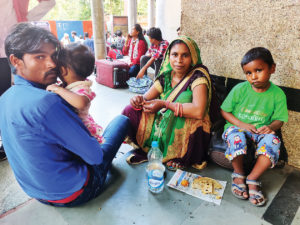
There are others like her. Satiram, who left his village Manikapur in Gonda, Uttar Pradesh, with another friend to find work. He believes that the money meant for the poor never reaches them and schemes such as the MGNREGA — which gives at least 100 days of wage employment in a year to every household in rural areas for unskilled manual work — is left to the powerful to determine who gets it.
“Humein toh schemes ke baare main pata hi nahi chalta, jab tak bataya nahi jayega toh kaise maloom padega” (We don’t even get to know about the schemes. If we aren’t informed how will we come to know) he asks, adding that the Pradhan of his village claimed no work was available.
So Satiram is now in the city, his first pit stop being Sadar Bazaar. He thinks if he gets a proper job then maybe he can bring his family for six months in a year, but now with no idea where he will spend the night, this is out of the question.
We also met Jitender, Shurjeet, Ankit and two others who didn’t want to speak. All hailing from UP’s Sitapur, the young men have all worked in Delhi before, at a medicine packing unit. Unwilling to divulge the location of the place, they depend on the same person who got them the previous job to help them out this time. Jitender says they are going to a jeans factory but do not know the address nor how much they would be paid – leaving it all to the hope that the “seth” would not dupe them.
They are keen to convey an impression of nonchalance, saying what brings them to Delhi is that they get to roam around. As Jitender says this, everyone else in the group nods their heads in agreement. The unmarried folk don’t have the burden yet of looking after their family and sending money home.
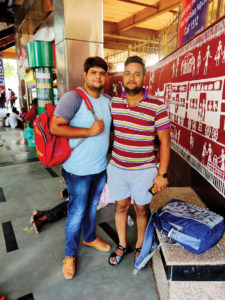
Earlier they made just about Rs 8,000 per month but unlike the others they don’t seem discontented.
But couples like Vimla (name changed) and her husband have to think about their two children. Having left Mathura for Delhi, we met the family at Nizamuddin Railway station as they sat down to have lunch consisting of roti and aloo sabzi (potato curry).
They are headed for Ghaziabad, to some relatives, who will perhaps help Vimla’s husband find a job in Delhi. He earlier did backbreaking labour in brick kilns making Rs 500 every day. They hope Delhi would help them find a better life for their children, especially get a seat in the schools of the city.
Less than a kilometre away, Sarai Kale Khan bus stop is another place where migrants wait to be picked up for labour. In the evening, those left behind were catching a bus home to Madhya Pradesh. Naresh Chhar, a driver with one of the bus companies operating from here, says that in the two months since he started working, he has met many migrants who have to return home with no cash in hand.
They are often severely underpaid and sometimes paid nothing at all. He says the owner of the bus does not object if he takes those who cannot pay back home. “Aur kya kar sakte hain? Unko chod toh nahi sakte yahi par” (What else can we do? We cannot just leave them here”, he says.
Most come with big hopes, the ones who return after a hiatus know what they are getting into and don’t harbour any dreams, except of earning enough to eat and a roof to sleep under. Making better policies for migrants is the need of the hour.
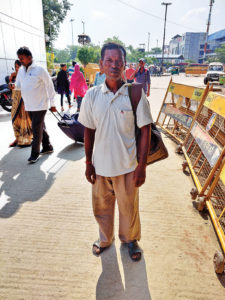
Delhi, however, does not just see blue-collar workers but also people like Devesh Gautam and Revash Saini who we met at Nizamuddin station as they waited to take a train back to Kota, Rajasthan. They are leaving after spending less than a day — their objective is to give an exam for a job in a government-run hospital.
Both MSc graduates in nursing from Kota, they say since 2018 when their course ended, they have been unable to find a good job. While they work as tutors for nursing students, their aim is to get work in the Capital despite the complaint that it has “so much pollution, traffic and population.”
As he looks around the train station, Gautam says he finds Delhi completely unsystematic where “things are not in control” but after spending over Rs 9 lakh on his education, he says he has to make periodic visits.
For most, Delhi is the place where they can find a livelihood — even though the majority are underpaid and undervalued.

